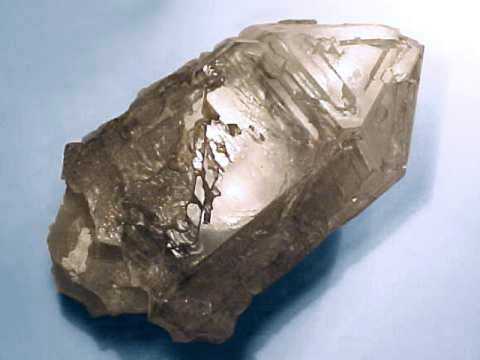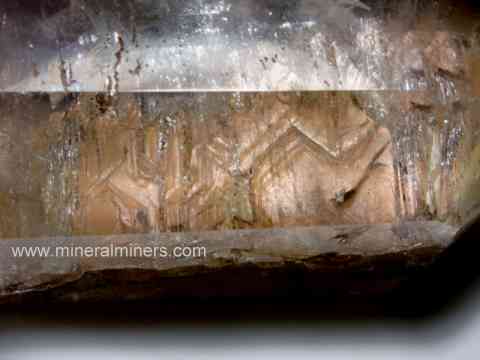


Enter our Virtual Gallery of
MINERALMINERS.COM®- Your Personal 'Link' Direct to the Jacare Quartz Mines for Elestial Quartz Crystals!TM
Elestial Quartz (Skeletal Quartz): Mineral Information
See more Varieties of Quartz
Links To Elestial Quartz Information Topics On This Page:
ELESTIAL QUARTZ PRODUCTS IN OUR VIRTUAL GALLERY:
(Select any Elestial Quartz Crystal image to enter our Virtual Gallery)
Elestial Quartz Crystals and other Genuine Elestial Quartz Products in our Online Crystal Store
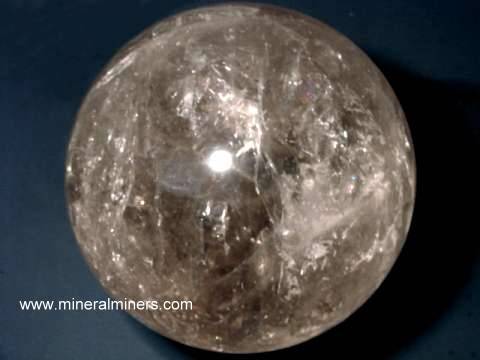 |
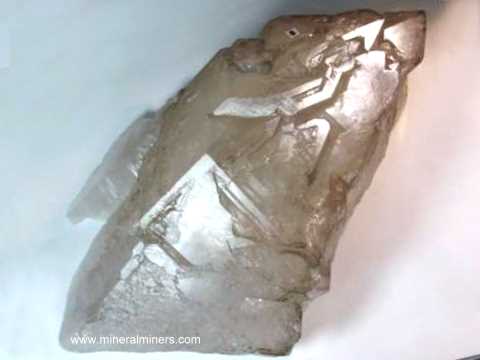 |
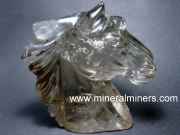 |
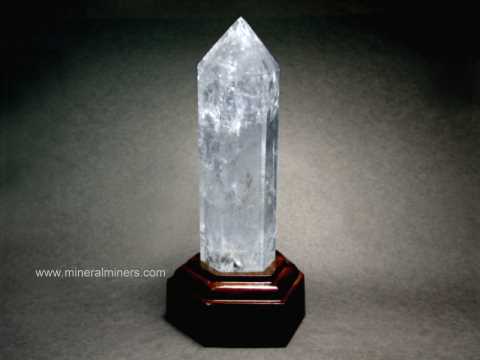 |
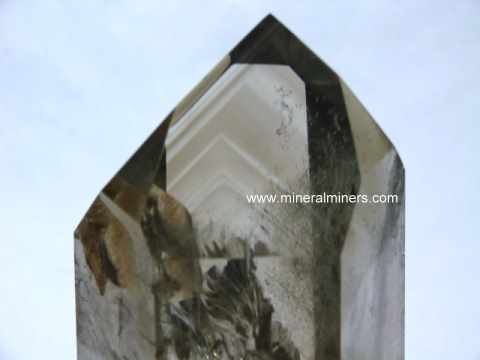 |
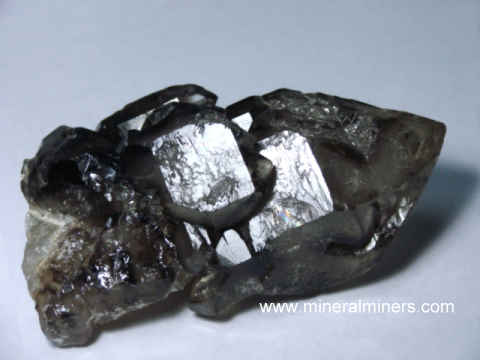 |
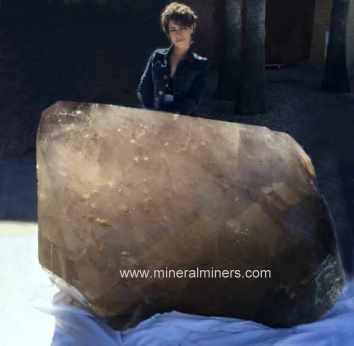 |
ELESTIAL QUARTZ PHYSICAL PROPERTIES
- Elestial (Skeletal) Quartz Chemical composition: SiO2
- Class: tectosilicate
- Crystal system: Hexagonal-R; 32 (trigonal-trapezohedral)
- Crystal habit: Etched macroscopic crystals with
layered internal cavities occur as
horizontally striated hexagonal prisms terminated by a combination of
positive and negative rhombohedrons forming six sided pyramids. Prism
faces and/or rhombohedral terminations may be lacking, poorly developed
or predominant resulting in diverse possible crystal habits. Trigonal
trapezohedral faces can occur in the upper right or left of alternating
prism faces identifying right or left handed crystals, respectively.
- Twinning: Dauphine twin with c the twin axis, Brazil twin with {1120} the twin plane, Japanese twin is rare with {1122} the twin plane.
- Quartz Specific gravity: 2.65
- Index of refraction: 1.54-1.55
- Birefringence: maximum of 0.009
- Pleochroism: none
- Hardness: 7
- Color: colorless, brown or gray with multi-colored clay inclusions.
- Luster: vitreous
- Transparency: transparent
- Cleavage: none
- Fracture: conchoidal
- Streak: white
QUARTZ (Elestial Quartz) BACKGROUND INFORMATION
Skeletal growth features can occur in the macrocrystalline quartz varieties; rock crystal, smoky quartz, citrine and amethyst.
Quartz (SiO2) is the most abundant single mineral on earth. It makes up about 12% of the earth's crust, occurring in a wide variety of igneous, metamorphic and sedimentary rocks.
Quartz varieties are commonly separated into two groups based on the size of the individual grains or crystals; macrocrystalline quartz in which individual crystals are distinguishable with the naked eye (example: quartz crystals), and cryptocrystalline quartz in which the individual crystals are too small to be easily distinguishable under the light microscope.
Some of the macrocrystalline quartz varieties are:
- Amethyst
- Ametrine
- Cat's-eye Quartz
- Citrine
- Phantom Quartz
- Rock Crystal
- Rose Quartz
- Rutile in Quartz
- Smoky Quartz
Blue Aventurine Quartz and Green Aventurine Quartz are actually quartzites (a rock, not a mineral) composed essentially of interlocking macrocrystalline quartz grains with disseminated grains of other color imparting minerals.
The cryptocrystalline varieties of quartz may be separated into two types;
fibrous and microgranular. Chalcedony is the general term
applied to the fibrous cryptocrystalline varieties.
Agate is a well known example of a fibrous cryptocystalline
banded Chalcedony variety of quartz. Carnelian, Chrysoprase and bloodstone
are other chalcedony varieties.
Chert is the general term applied to the granular cryptocrystalline
varieties of quartz, of which flint and Jasper are examples.
Opal is a hydrous silica mineral composed of SiO2 with some water incorporated within its structure.
ELESTIAL QUARTZ OCCURRENCE AND DIAGNOSTIC FEATURES
Skeletal quartz (more popularly known as Elestial Quartz or Jacare Quartz) exhibits unique internal and external dissolution-growth features resulting from unstable conditions during crystallization. These skeletal growth features occur most often in the macrocrystalline quartz varieties rock crystal and smoky quartz. Elestial quartz crystals with natural golden citrine color or natural purple amethyst color are much more rare. These rare natural golden and purple colors in elestial quartz are due to trace iron impurities in the quartz crystal structure.
Skeletal quartz crystals often form with a geometric pattern of lines, depressions and raised terminations (related to the quartz crystal structure) etched into their surface. Internally, these crystals exhibit plainly visible cavities in geometric patterns (also related to the quartz crystal structure) which can contain clay minerals of varied colors, sometimes accompanied by carbon dioxide or water. These cavities often have a layered or ribbed aspect and are sometimes so pronounced as to make the crystal almost hollow, giving rise to the term skeletal quartz. Occaisionally these cavities contain both liguid and gas phases together known as two-phase inclusions. In rare cases, these two-phase inclusions in quartz can be visible to the unaided eye and may show actual movement of the gas phase within the liquid phase (popularly known as elestial quartz crystal 'enhydros').Skeletal quartz occurs in vugs or pockets in granitic pegmatites associated with the feldspar varieties microline and albite, and it is occasionally found together with some of the more rare pegmatite minerals such as lepdiolite & amblygonite. Skeletal quartz also occurs occasionally together with some of the rare pegmatite gem varietie such as aquamarine, kunzite, and tourmaline.
Skeletal quartz is recognized by its unusual etchings and internal cavities.
QUARTZ HISTORY and USES
Pliny wrote nearly 2000 years ago that quartz crystals formed from ice by intense cold for long periods of time in dark clefts and caverns in the mountains. This general belief was popular in diverse cultures until the eighteenth century, when modern geology began to develope in Europe.
Quartz crystals have been used as gemstones and other ornamental and religous objects for thousands of years. Polished quartz crystal spheres or crystal balls were used as a means of divination or scrying in medieval times. For thousands of years before this, quartz crystal and objects made from it were used for divination, disease diagnosis and healing, and for awareness of current events in distant places in many ancient cultures.
Skeletal quartz is a mineralogical term refering to this quartz variety's peculiar dissolution features. It is popularly known today by the metaphysical term elestial quartz. Much of the skeletal quartz available today is mined in Brazil, where the local miners refer to it as Jacare quartz which means alligator in their native dialect, referring to the similarity between the geometric patterns on the surface of these crystals to the natural designs on the skin of the reptile. The name quartz comes from the Saxon word querklufterz which meant cross vein ore.
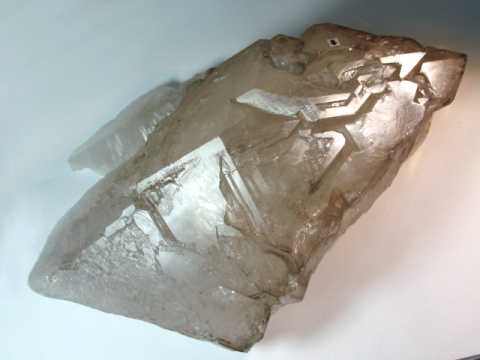
ELESTIAL QUARTZ METAPHYSICAL PROPERTIES
Elestial quartz is said to be especially usefull in healing emotional problems, providing balance between heart and mind. Elestial quartz is also said to impart wisdom and to enhance insight, and to be an excellent transformational tool helping one to understand and adjust to change. It is also said to be of significant assistance during meditation.
For more in-depth metaphysical information, see our Metaphysical Books section.
Enter Our Virtual Gallery of
Go up to the TOP of this Elestial Quartz Info page
© Copyright 1998-2023 Gem & Mineral Miners, Inc.® All Rights Reserved.

